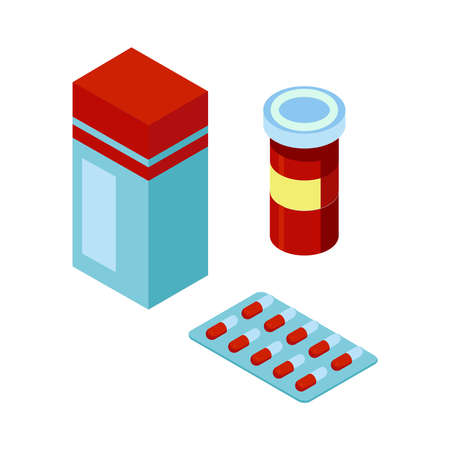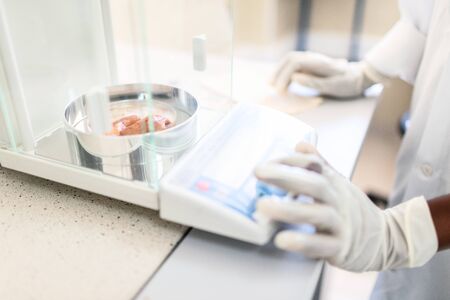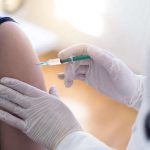Evolving Trends in Aesthetic Aftercare
Aesthetic aftercare has come a long way in recent years. Thanks to technology, changing patient expectations, and evolving industry standards, the way people care for their skin and body after cosmetic treatments is now more personalized, effective, and convenient than ever before.
Shifts in Patient Expectations
Today’s patients are more informed and proactive. They expect quicker recovery times, less downtime, and easier access to professional guidance. This shift has pushed clinics and product developers to design smarter solutions that support healing and enhance results from the comfort of home.
Technological Advancements
Technology plays a major role in modern aesthetic aftercare. From wearable devices that monitor skin conditions to mobile apps that track healing progress, these tools help both patients and providers stay connected during the recovery process. Some clinics even use AI-powered platforms to offer customized skincare advice based on treatment type and skin profile.
Home vs. Clinical Care: A New Balance
The line between in-clinic care and home care is becoming more blended. Patients can now use medical-grade devices at home or follow clinic-approved protocols using professional-grade products. Here’s a simple breakdown:
| Aspect | Traditional In-Clinic Care | Modern Home-Based Care |
|---|---|---|
| Treatment Monitoring | Follow-up visits | Mobile apps & virtual check-ins |
| Skincare Products | Clinic-exclusive items | Medical-grade home kits |
| Pain Management | Cryotherapy & medication at clinic | At-home cold therapy devices & patches |
| Support Access | Sporadic phone consultations | 24/7 chatbots & telehealth services |
Evolving Industry Standards
Aesthetic providers are also raising the bar when it comes to safety and outcomes. Many clinics now provide detailed recovery guides tailored to each procedure. There’s also a growing emphasis on holistic wellness—encouraging hydration, nutrition, stress management, and sleep as part of the healing journey.
The Role of Education and Communication
A big part of today’s aftercare success lies in how well patients understand their recovery plan. Clear instructions, video tutorials, and ongoing communication with providers ensure better adherence and fewer complications.
2. At-Home Aftercare: Cutting-Edge Solutions
As aesthetic treatments become more advanced and accessible, aftercare is also evolving—especially in the comfort of our own homes. Today’s at-home recovery options go far beyond basic skincare routines. Thanks to technology like AI, wearable devices, and personalized treatment plans, patients can now enjoy faster healing, fewer complications, and better results right from their living rooms.
AI-Powered Skincare Routines
Artificial intelligence is revolutionizing the way we care for our skin post-treatment. AI-powered apps and devices analyze your skin condition in real-time and recommend customized regimens based on your needs. These tools can adjust recommendations as your skin heals, ensuring you’re always using the right products at the right time.
Benefits of AI Skincare Tools
| Feature | Benefit |
|---|---|
| Real-time skin analysis | Accurate tracking of healing progress |
| Product matching | Ensures compatibility with treated skin |
| Daily routine updates | Keeps skincare relevant to each recovery stage |
Wearable Tech for Monitoring Recovery
Smart wearables are no longer just for fitness. Devices like skin sensors or smart patches can monitor hydration levels, inflammation, temperature changes, and even UV exposure—all critical factors during aesthetic recovery. Some wearables alert users when it’s time to reapply sunscreen or when signs of irritation appear, helping prevent complications early on.
Popular Wearable Features
- Sensors for inflammation: Detect swelling before it becomes visible
- Hydration monitoring: Helps maintain optimal skin moisture levels
- Sunscreen reminders: Keeps treated areas protected from UV damage
Personalized Treatment Plans at Home
No two people heal the same way, which is why custom aftercare plans are gaining popularity. Using data from your procedure, lifestyle habits, and genetic background, some platforms now offer tailored guidance for home recovery. This includes schedules for applying topicals, dietary suggestions to support skin repair, and even virtual check-ins with providers.
Your Personalized Aftercare Might Include:
- A daily product schedule specific to your treatment type
- Nutritional tips to enhance collagen production and reduce inflammation
- Status check-ins via video or app-based assessments with your provider
The future of aesthetic aftercare is here—and its happening right at home. With smart technology guiding every step of the healing process, patients can enjoy a safer, more comfortable recovery experience without ever leaving their house.

3. Clinical Advancements in Post-Treatment Care
Modern aesthetic medicine is evolving fast, and clinical aftercare is no exception. Today’s post-treatment care goes far beyond traditional ice packs and topical creams. With new technologies and medical-grade innovations, recovery is not only faster but also more effective, leading to better overall results for patients.
Regenerative Medicine: Healing from Within
One of the most exciting developments in clinical aftercare is regenerative medicine. This approach uses the body’s natural healing processes to repair skin and tissue after cosmetic procedures. Treatments like PRP (Platelet-Rich Plasma) therapy and stem cell-based solutions are now commonly used to speed up recovery, reduce inflammation, and improve skin texture.
Popular Regenerative Therapies:
| Treatment | How It Works | Benefits |
|---|---|---|
| PRP Therapy | Uses a patient’s own blood to extract growth factors that stimulate healing | Reduces downtime, promotes collagen production, enhances skin tone |
| Stem Cell Therapy | Uses stem cells to regenerate damaged tissues at a cellular level | Speeds up healing, reduces scarring, improves elasticity |
Advanced Wound Healing Techniques
Post-procedure wounds—whether from laser treatments, microneedling, or surgical interventions—now benefit from cutting-edge dressings and topical solutions. These innovations help protect the skin while accelerating the healing process.
Next-Gen Wound Care Products:
- Silicone Gel Sheets: Used to minimize scarring and support hydration of healing tissue.
- Hydrocolloid Dressings: Help maintain a moist environment for optimal wound healing.
- Peptide-Based Creams: Promote cell regeneration and soothe irritation post-treatment.
The Role of Technology in Monitoring Recovery
Aesthetic clinics are also leveraging technology to track patient recovery more accurately. Digital imaging tools can assess swelling, redness, and other indicators over time, allowing providers to adjust care plans as needed. Some clinics even offer app-based follow-ups where patients can share progress photos and receive real-time feedback from their provider.
Benefits of Tech-Enabled Aftercare:
- Improved communication between patient and provider
- Faster identification of complications or delayed healing
- A more personalized recovery experience
The future of clinical aftercare in aesthetics is clearly moving toward smarter, faster, and more personalized solutions. These advancements not only enhance results but also provide patients with a safer and more comfortable recovery journey.
4. The Role of Telemedicine in Aesthetic Recovery
Telemedicine is reshaping the way patients experience aesthetic recovery. With the rise of virtual consultations, remote monitoring tools, and AI-powered diagnostics, aftercare has become more accessible, convenient, and personalized than ever before.
Virtual Consultations: Convenient and Time-Saving
Instead of commuting to a clinic for every follow-up, patients can now meet with their providers through video calls. This is especially helpful for those who live far from their provider or have busy schedules. Virtual consultations allow for real-time updates on healing progress, quick answers to questions, and peace of mind without leaving home.
Benefits of Virtual Consultations
| Benefit | Description |
|---|---|
| Convenience | No need to travel for check-ups |
| Time-saving | Avoids long wait times in clinics |
| Accessibility | Makes care available to rural or remote areas |
Remote Monitoring: Keeping Track Without Leaving Home
Aesthetic providers are using smart devices and apps to monitor recovery at home. Patients can upload photos of their healing progress or use wearable sensors that track swelling, temperature, or movement. These tools help providers catch early signs of complications and adjust care plans quickly.
Common Remote Monitoring Tools
| Tool | Function |
|---|---|
| Aesthetic Healing Apps | Upload images and receive feedback from providers |
| Wearable Sensors | Track vital signs like skin temperature or heart rate post-procedure |
| Dressing-integrated Tech | Sensors built into bandages to detect infection risks early |
The Power of AI in Post-Procedure Diagnostics
Artificial Intelligence (AI) is playing an exciting role in aesthetic aftercare. AI algorithms can analyze photos taken by patients to detect signs of infection, scarring, or delayed healing—sometimes even before symptoms appear. This helps doctors make quicker decisions and personalize care even further.
How AI Enhances Aftercare:
- Image Analysis: Detects subtle changes in skin tone, swelling, or texture over time.
- Treatment Suggestions: Recommends next steps based on recovery patterns.
- Error Reduction: Minimizes human error in evaluating patient progress.
The integration of telemedicine technologies in aesthetic recovery doesnt just improve convenience—it raises the overall quality of care. As digital tools continue to evolve, patients can expect faster communication, earlier intervention when problems arise, and more comfortable recoveries from the comfort of home.
5. Sustainability and Ethical Considerations in Aftercare
As the aesthetic industry evolves, there’s a growing focus on sustainability and ethical practices in both clinical and at-home aftercare. Today’s consumers are more conscious about the environmental impact of their skincare routines and treatments. This shift is driving clinics and product developers to embrace greener, cruelty-free, and more responsible options.
Eco-Friendly Skincare Products
Patients are increasingly choosing skincare products that are made with natural ingredients, minimal packaging, and biodegradable materials. Brands are responding by offering items that not only support skin healing but also reduce environmental waste. For example, refillable containers, glass packaging, and recyclable tubes are becoming the norm.
| Traditional Aftercare Products | Sustainable Alternatives |
|---|---|
| Single-use plastic packaging | Refillable or recyclable containers |
| Chemical-heavy formulations | Plant-based and organic ingredients |
| No sourcing transparency | Ethically sourced raw materials |
Cruelty-Free and Vegan Options
Cruelty-free products—those not tested on animals—are now a standard expectation for many patients. Vegan formulations, which exclude animal-derived ingredients, are also gaining popularity. Clinics that stock these types of products can appeal to a broader audience who prioritize compassion along with beauty.
The Role of Clinics in Ethical Aftercare
Aesthetic providers are also stepping up by adopting greener practices within their facilities. These include reducing single-use tools, switching to energy-efficient devices, and using digital paperwork to cut down on printing. The move toward ethical practices doesn’t just benefit the planet—it also builds trust with patients who value transparency and responsibility.
Why It Matters
The future of aesthetic aftercare isn’t just about advanced technology or faster recovery times—it’s also about caring for our environment and making ethical choices. Patients today want to feel good about how they look and how their treatments impact the world around them. By integrating sustainability into every step of the aftercare process, from product selection to clinic operations, the industry can support both personal wellness and global well-being.


